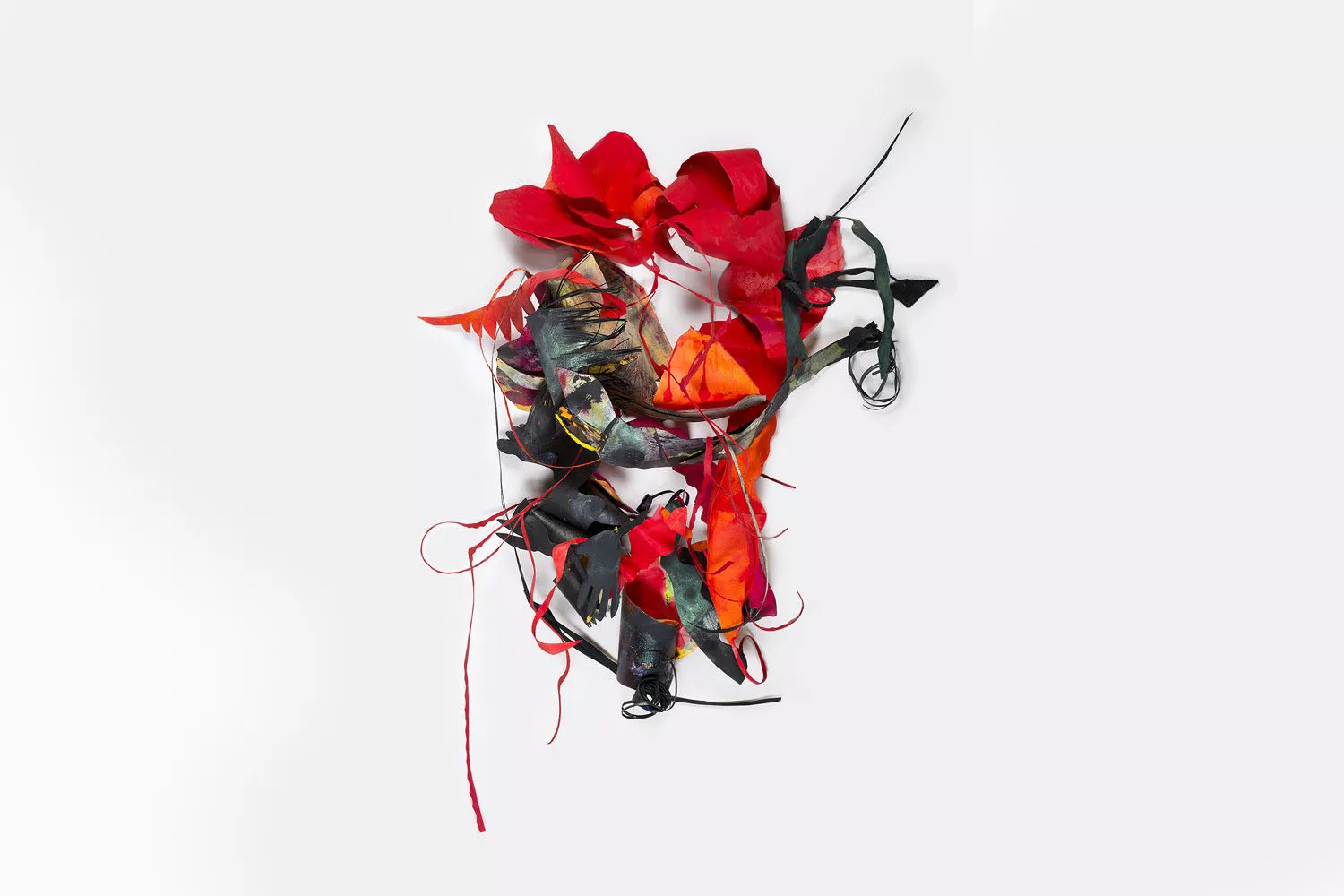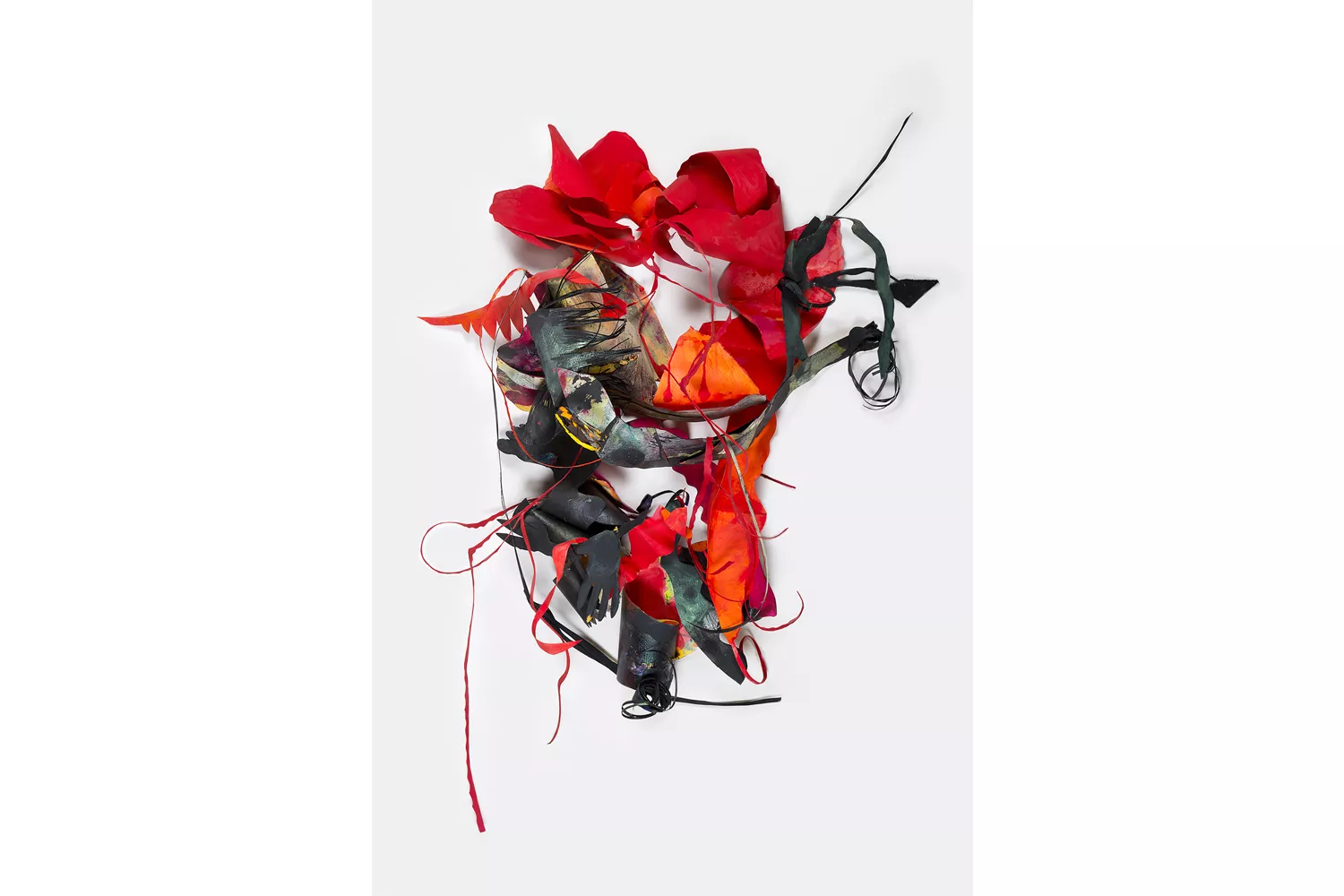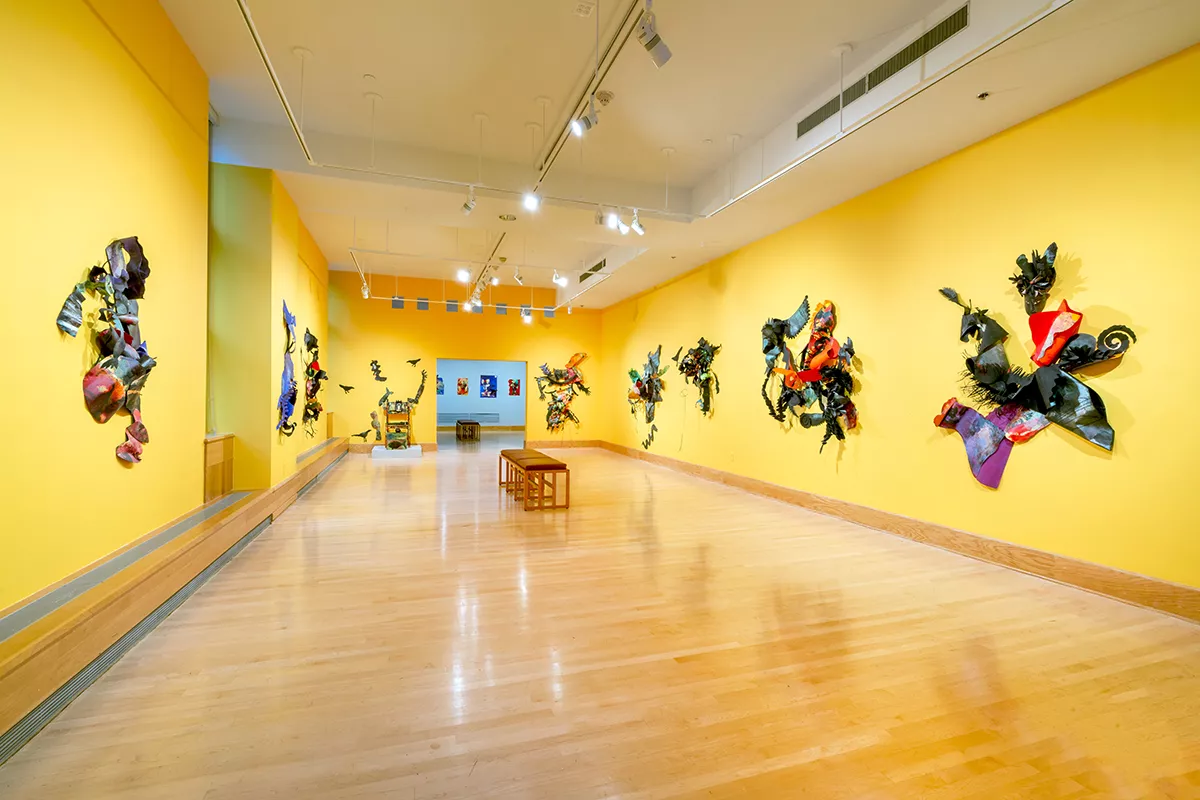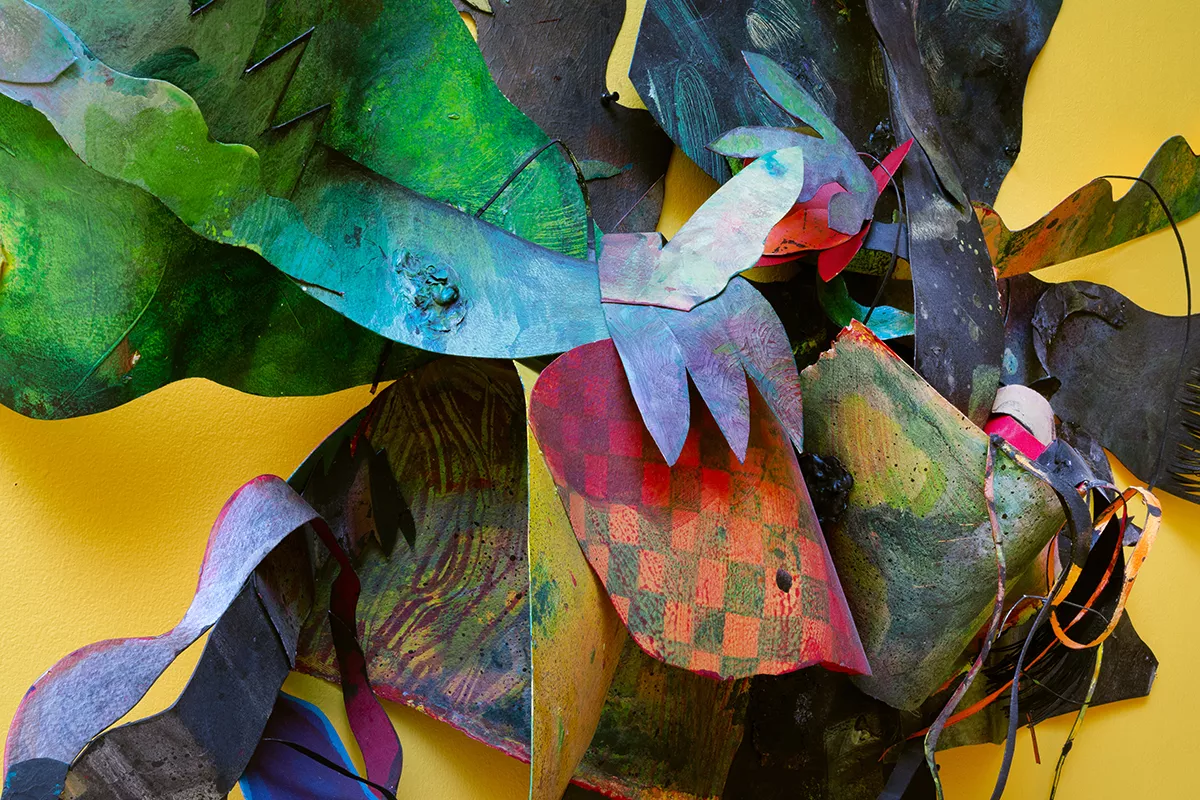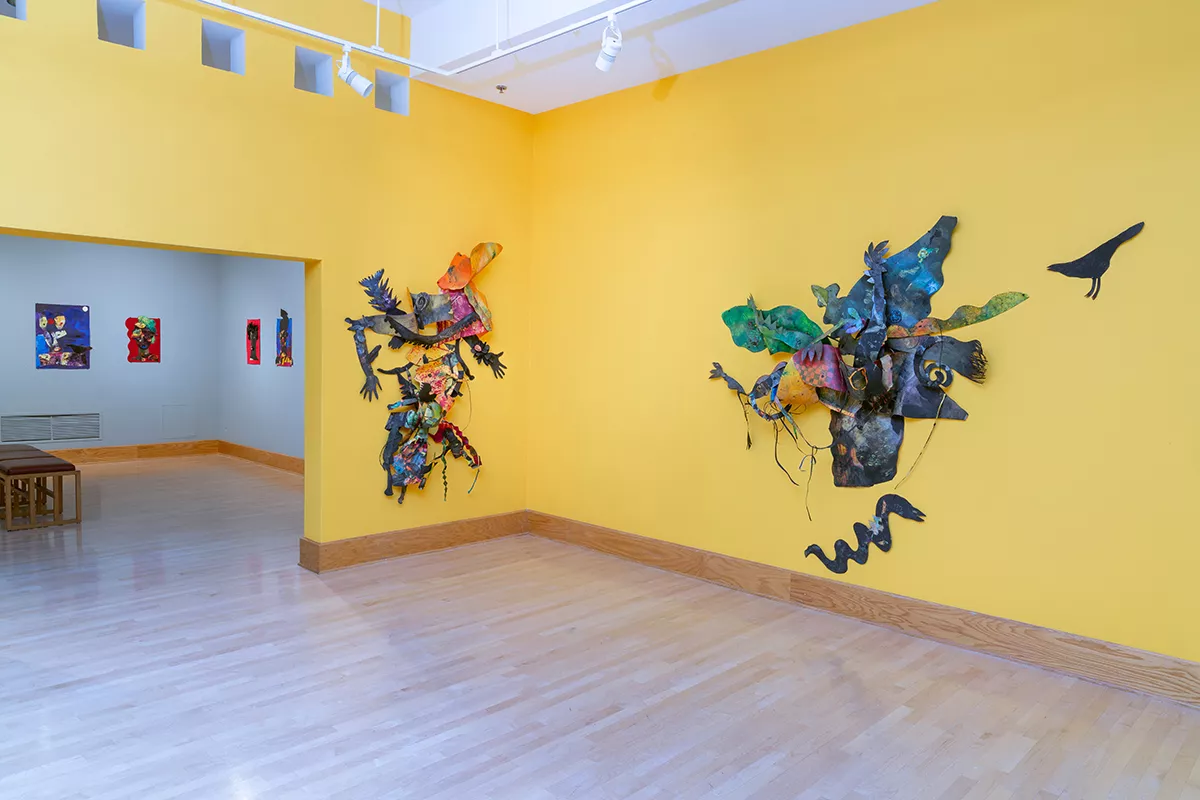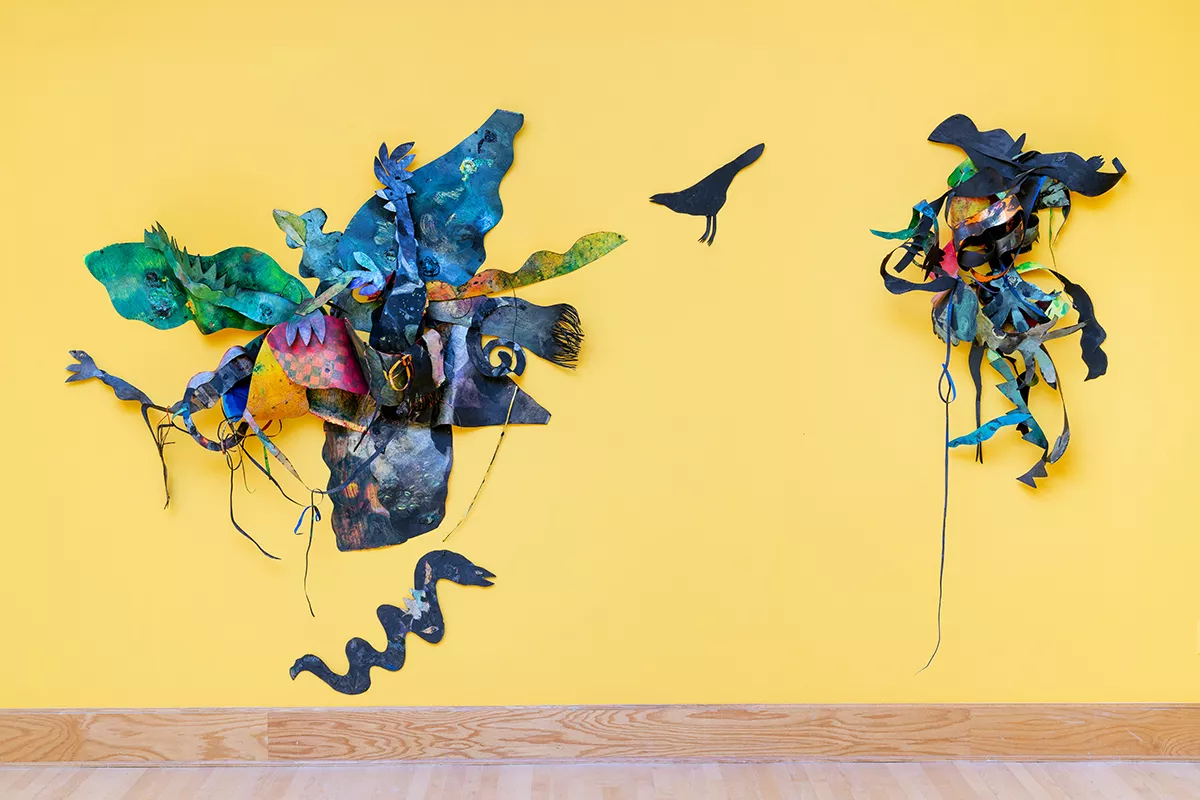Ubiquitous Presence: Selected Works by Barbara Bullock
Ubiquitous Presence features recent wall-mounted cut-paper installations and portraits by Barbara Bullock. Born in 1938 and raised in Philadelphia, Bullock is one of the Mid-Atlantic region's most notable and widely-respected artists. She has spent nearly sixty years challenging European artistic and cultural conventions; offering new ways of approaching form, color, and process; and investigating complex ideas related to gender, belief systems, dreams, and other aspects of identity. Shifting between abstract and figurative modes, Bullock centers and honors diverse Black cultures. She also prioritizes the cultivation of relationships – both ancestral and contemporary – in every aspect of her life and practice.
The entire front room of the List Gallery has been painted the same vibrant gold as the artist's studio—a color that animates Bullock's painted paper assemblages and transforms the conventional "white cube" of the contemporary art gallery into a vibrantly colorful and uniquely evocative space.
Bullock creates abstract and figurative assemblages by painting 300-pound watercolor paper with numerous layers of acrylic paint; shaping the paper with scissors, she creates both graphic elements and sculptural forms that often consist of discrete or interchangeable elements, that can be reconfigured over time. For example, Bullock combined two signature works in the List Gallery—Bitches Brew (2014) and Swallowing Bitter Pills, Chewing Dry Bones, (2012)—into a single configuration. The only fully sculptural work in the exhibition, Altar (2007-ongoing), consists of chair and other found objects that have been sculpturally transformed, painted, and combined; at the List Gallery, Bullock surrounds and reanimates Altar with cut paper forms of birds, a snake, and other resonant shapes.
Such works reflect the artist’s travels throughout the African continent during the mid 1980’s and early 1990s, her lifelong study of art and culture related to the African diaspora, and her ongoing meditations on both personal and collective belief systems. Bullock has stated that she created some works, such as House Transitioning to Ancestor, Chasing After Spirits Series, (2013) as a way of reflecting upon devastating events, such as Hurricane Katrina, which disproportionately affect African American communities.
An entire wall panel in the rear gallery is painted black and devoted to a key work in the exhibition: Trayvon Martin: Most Precious Blood (2013-2014, shown above). The adjacent walls are painted grey and feature selected portraits from a series Bullock began in 2020 in response to notorious examples of social injustice and the ravages of the Covid-19 pandemic. Rather than working from direct observation or searching for verisimilitude, Bullock abstracts features drawn from varied sources, including sketches, personal memories, photographs, historical research, and contemporary events. For example, the artist notes that she began one of her portraits working intuitively, but soon found herself thinking about George Floyd, who was murdered by a police officer in Minneapolis in 2020. Although Floyd's likeness and the events surrounding his death informed her creative process, the resulting work became more archetypal in character. Surrounding the viewer with poignant images, Bullock emphasizes the importance of both creativity and interconnection.
Bullock's work has been exhibited and collected by galleries and museums throughout the United States, including The Woodmere Art Museum, The Pennsylvania Academy of the Fine Arts, and The African American Museum in Philadelphia, Pennsylvania; The Noyes Museum in New Jersey; and the Minneapolis Institute of Art in Minnesota. In 2016, La Salle University Art Museum organized the exhibition, Barbara Bullock: Chasing After Spirits, and published an eponymous 155-page exhibition catalog. Bullock's most notable accolades include a Pew Fellowship in the Arts, a Mid-Atlantic Arts Foundation Visual Arts Residency Grant, the Bessie Berman Grant awarded by the Leeway Foundation, and two Distinguished Teaching Artist awards from the New Jersey State Council on the Arts. She has won and executed numerous public commissions, including for the Philadelphia International Airport, the Robert Wood Johnson Foundation, SEPTA, and the Village of the Arts and Humanities, Philadelphia. As an educator, advisor, and artist, Bullock has led countless classes at museums, schools, prisons, and non-profits, such as Arts Horizon.
This exhibition was made possible by the Kaori Kitao Endowment for the List Gallery.
